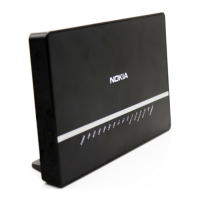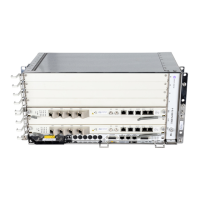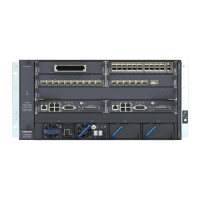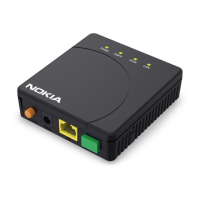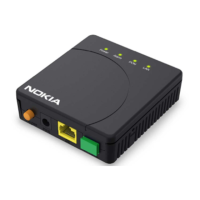Services Overview
66
FD 100/320Gbps NT and FX NT IHub Services Guide
3HH-11985-AAAA-TQZZA Issue: 13
Figure 6 Ring in the protection state
Once the failed link recovers, the nodes that blocked the link again send the R-APS
messages indicating no failure this time. This in turn triggers RPL Owner to block the
RPL link and indicate the Blocked RPL link the ring in R-APS message, which when
received by the nodes at the recovered link cause them to unblock that link and
restore connectivity (again all nodes in the ring perform FBD Flush and MAC learning
takes place). The ring is back in the normal (or idle) state.
Within each path, Y.1731 Maintenance Entity Group (MEG) Endpoints (MEPs) are
used to exchange R-APS specific information (specifically to co-ordinate
switchovers) as well as optionally fast Continuity Check Messages (CCM) providing
an inherent fault detection mechanism as part of the protocol. Failure detection of a
working path by one of the mechanisms triggers to move from working to protecting
circuits. Upon failure, re-convergence times are dependent on the failure detection
mechanisms. In the case of Y.1731, the CCM transmit interval determines the
response time. The ISAM supports message timers as 100 milliseconds.
Alternatively, 802.3ah (Ethernet in the First Mile) or simple Loss of Signal can act as
a trigger for a protection switch where appropriate. In case of direct connectivity
between the nodes, there is no need to use Ethernet CCM messaging for liveliness
detection. This can be achieved by not provisioning a MEP on the primary path.
G.8032 supports multiple data channels (VIDs) or instances per ring control instance
(R-APS tag).G.8032 also supports multiple control instances such that each instance
can support RPLs on different links providing for a load balancing capability however
once services have been assigned to one instance the rest of the services that need
to be interconnected to those services must be on the same instance. In other words
each data instance is a separate data VLAN on the same physical topology. When
there is any one link failure or any one node failure in the ring, G.8032 protocols are
capable of restoring traffic between all remaining nodes in these data instances.

